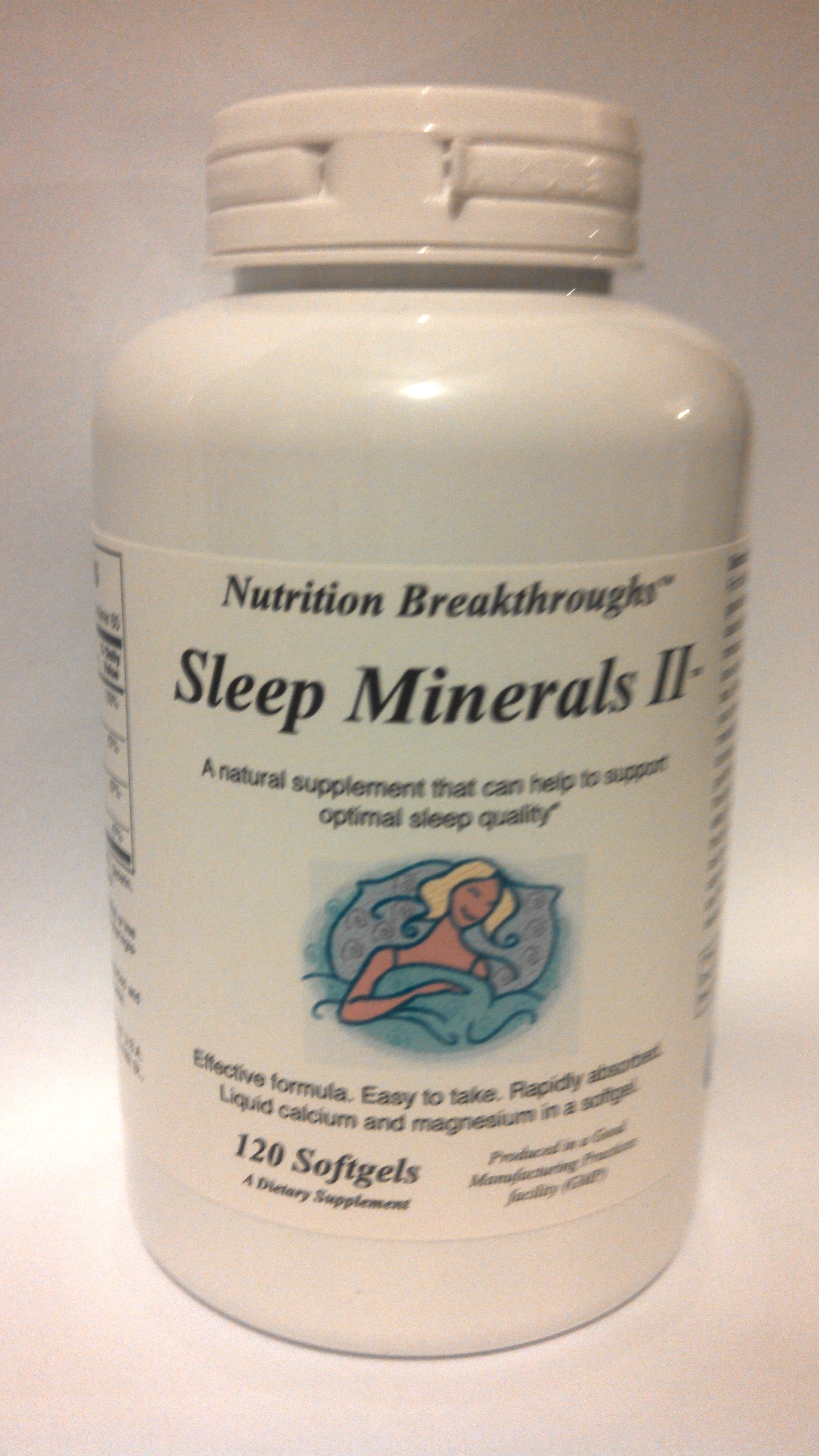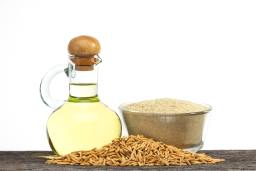
Nutrition Breakthroughs would like every customer of Sleep Minerals II to get the full benefits of the product and enjoy the restful, deep sleep they desire. Here are some tips and advice we’ve put together over the years, from learning how to coach people to use the product successfully.
Sleep Minerals II has been newly improved to feature rice bran oil as its main oil ingredient. Rice bran oil is rich in two types of natural vitamin E and also high in Oryzanol (a word that sounds like “Original”), which is a powerful antioxidant only found in rice bran oil. Antioxidants protect our tissues from deterioration and help slow the aging process.
Rice bran oil is proven in studies to lower cholesterol and blood pressure levels, remedy menopausal symptoms such as hot flashes and strengthen the immune system.
If you are an existing customer, it’s possible that you may need to take less of this new formula. The softgel shell is made of natural gelatin and it has a slightly yellowish hue. The amounts of vitamin D and magnesium in the product have been increased, and zinc has been added as it contributes to healthy bones, eyes and digestion. We have received many testimonials for this formula. Here is one of them:
Richard P. of Parkville, Maryland says: “The Sleep Minerals are making quite a difference. I was regularly waking up at around 3:00 a.m. and after a week or so my sleep improved quite a lot. I wake once a night to go to the bathroom, but the great thing is, I then fall back asleep and sleep several more hours. This has been a great improvement.”
Here are the tips on using Sleep Minerals II:
1) Some of my customers have asked me with amazement: “What is in this product? Is it really all-natural?” I want you to know that even though the product is effective at helping people fall sleep or get back to sleep in the night, it is made from only natural minerals and vitamins — it’s just a potent formula. Sleep Minerals II is a safe product. The factory that makes it has been certified as having Good Manufacturing Practices (GMP) and all ingredients are sourced in the USA.
2) Keep the bottle of softgels by your bed. For difficulty falling asleep, take 1 softgel with water 30 to 45 minutes before bed. Go to the bathroom before bed so you’re not woken up to go too often during the night. If you are sensitive to supplements or minerals, start with 1 softgel for several nights. In any case, its best to stay with one softgel for about a week. If you are unable to get to sleep, increase to 2 softgels before bed. Reduce the dose if you become drowsy during the day or your bowels become too loose. Use 1 softgel for kids over 10
3) Gradually building up the minerals in your system is the best approach to gaining better sleep. It may take days or weeks of use to get the best results. Some people start noticing good effects after the first or second week of use – some sooner, some later. Be sure to continue taking the product, as consistency is the key.
4) If you are taking the product before bedtime and have a drowsy feeling in the morning or your bowels become too loose, you can take it earlier than at bedtime. For example, take it with dinner or an hour or two before bedtime with a snack, rather than 45 minutes before bedtime. If one softgel continues to be too much, you can cut or bite one end open and squeeze half the contents of one softgel into your mouth or onto a cracker with peanut butter (or another topping) and swallow it down. Save the other half in a baggie. This is worth doing if you find you need to, as some people require less to get results. Even if you’re taking just half a softgel, it’s important to be consistent with it.
5) Occasionally, if someone takes too many softgels for them, the calcium may have a stimulating effect. If this occurs, reduce the amount you’re taking and it should have a more relaxing effect. For others, taking too many may leave them feeling tired during the day. In this case, reduce the dose.
6) If you prefer not to swallow the softgels, bite or cut one end open and squeeze the contents into your mouth and drink it down. You can also mix it with food or spread it on food. It’s like a creamy paste inside with mixed minerals. This paste is the essence of what makes the minerals so very absorbable.
7) If you are taking any medications in the evening, its best to take them at least an hour apart from the Sleep Minerals. This is because each thing may have a different effect and its best to keep them separate.
In addition to insomnia, this product also provides excellent nutritional support for restless leg syndrome, bone health, muscle cramps, menopausal symptoms, heart health, stomach health, premenstrual syndrome, and teenage insomnia.
We look forward to staying in touch with you and to hearing any questions, comments, or beneficial improvements to your sleep. Let us know how you do.
For more information on Sleep Minerals II, visit http://www.nutritionbreakthroughs.com/html/sleep_remedy_for_insomnia_help.html.









